Projects
- Current Projects
- Recently Completed
- Improving Communities
- Seismic Safety
Through innovative design, UC San Diego's transformational projects inspire and deliver UC San Diego’s vision of the future. With the focus on creating new and better ways of collaborating across groups and disciplines, new construction projects revolutionize the physical, cultural, intellectual, healthcare, patient care, research, residential and diversity of the UC San Diego and Hillcrest campuses.
Design elements focus on UC San Diego’s commitment to the student, staff, faculty, patient, visitor and community experience by creating healthy inclusive and collaborative living, learning, teaching, working and playing mixed-use spaces that promote local and global excellence.
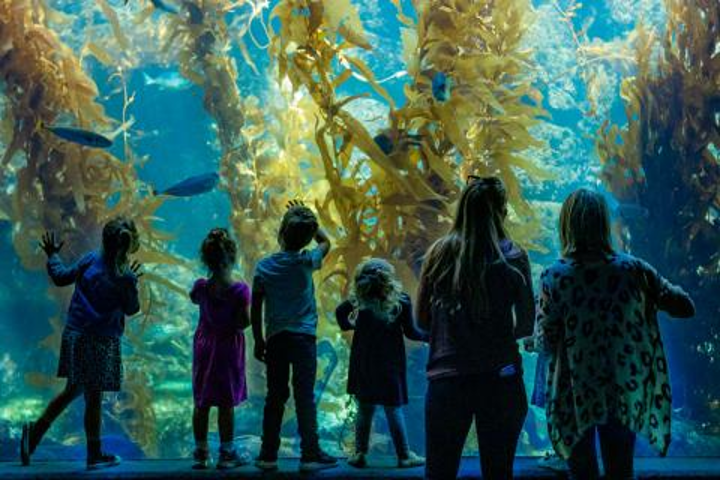
Completed in 1992, Birch Aquarium at Scripps Institution of Oceanography is home to more than 60 different habitats, ranging from cold to tropical waters. In order to provide a more interactive guest experience, increase event space, and better facilitate Birch’s husbandry arts, conservation, and breeding programs, the project proposes updates to the aquarium’s interior and exterior facilities.
In order for the aquarium to remain open throughout the work, the project will utilize a phased approach. The current phase will construct the new Living Seas gallery, to replace the aquarium’s Hall of Fishes. Living Seas will feature expanded viewing windows and immersive habitats. The experience will guide guests from the cool waters of the Pacific Northwest, to the vibrant reefs and mangroves of the Tropical Pacific.
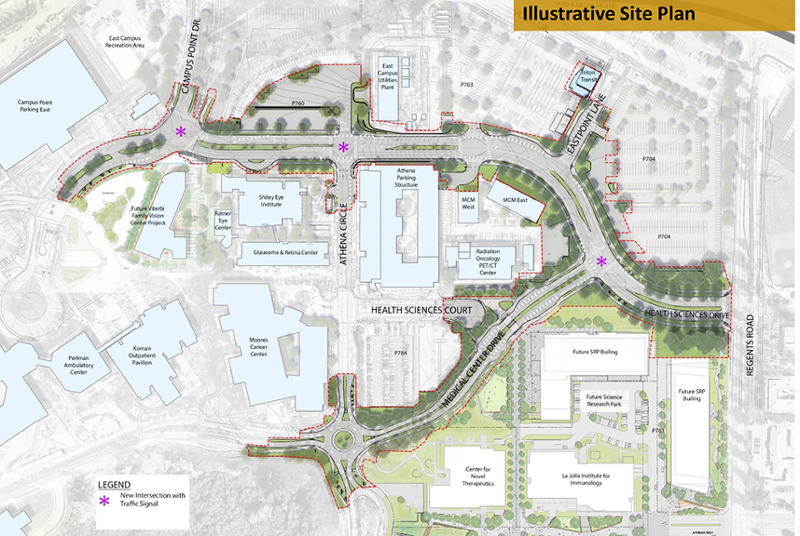
The proposed project would consist of a strategic realignment and widening of Health Sciences Drive, Medical Center Drive, and surrounding areas in order to improve access, safety and wayfinding on the East Campus. The project would implement a critical circulation enhancement, as identified in the 2018 Long Range Development Plan and associated East Campus Planning Study.
The proposed road realignments would simplify patient and visitor wayfinding by strengthening a singular, flowing path towards the hospital and clinical services, while also reducing decision points. In addition, a new, more direct road connection south of Health Sciences Drive would allow service vehicles to turn and continue directly towards the central utility plant, hospital service areas, and clinical loading docks to Medical Center Drive South.
The proposed project would convert the existing westerly end of Health Sciences Drive into a pedestrian and micro mobility-friendly corridor, and new “smart” traffic signals at all major intersections within the project would be installed, along with a roundabout at the connection to Medical Center Drive South.
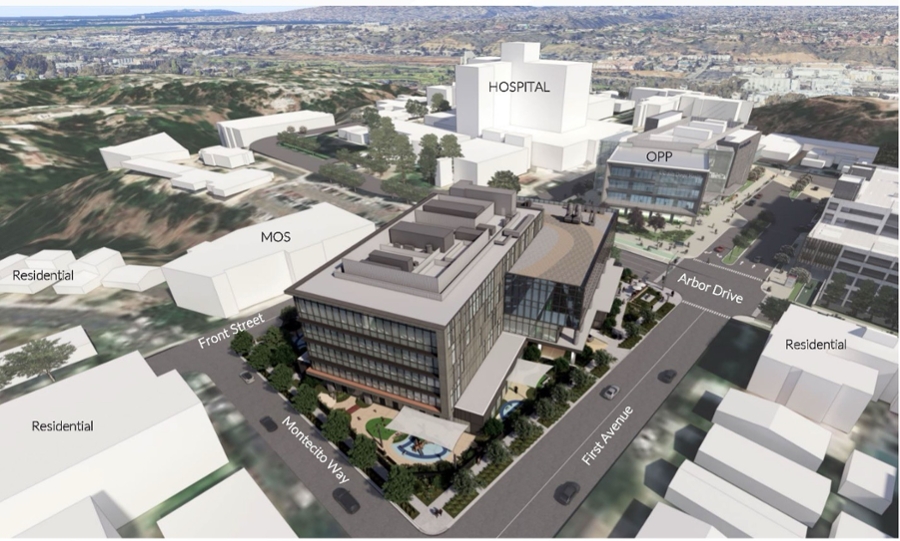
Project rendering
The Multipurpose Clinical Research (MCR) Building program would consist of a consolidation of administrative functions and clinical research, and would incorporate new retail, childcare, and community wellness. The proposed project is part of the strategic redevelopment of the Hillcrest Campus, which includes construction of a new hospital to meet seismic requirements while maintaining existing hospital operations. The redevelopment plan necessitates a multi-phase construction effort, including construction of a replacement hospital/inpatient services, consolidation of fragmented outpatient services, residential housing, and other support functions.
The proposed project would be located on the existing Montecito Parking Lot (105 spaces) directly east of Medical Offices South. Pedestrian facilities, including walkways, stairs, and sidewalks leading to building access points, would also be incorporated.
The proposed Hillcrest Campus Phase 2 Utility Undergrounding Project would underground the existing overhead electrical and telecommunications facilities throughout the Hillcrest Campus gateway, specifically along Arbor Drive between Front Street and First Avenue, First Avenue between Arbor Drive and Montecito Way, and Montecito Way between Front Street and First Avenue. The Hillcrest Campus 2019 LRDP identified an overhaul of the campus utility and infrastructure systems, including undergrounding current utilities, in order to upgrade the existing utilities systems, improve infrastructure reliability, and promote a more resilient campus overall.
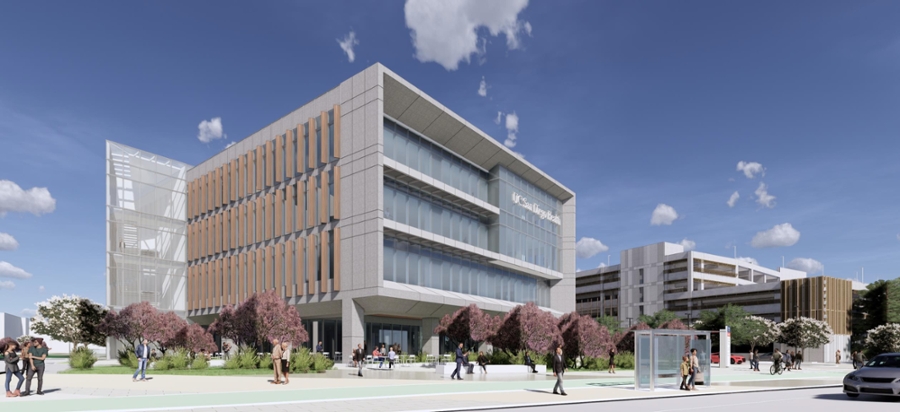
Project rendering of the outpatient pavilion on the Hillcrest campus Credit: Arcadis
An ambitious program to rebuild the UC San Diego Hillcrest campus will provide new facilities, new technology, increased capacity, expanded care offerings, workforce housing and other community services and amenities. Over the next 15 years, construction on the $2.5-$3 billion project will continue in five major phases, during which the majority of the existing buildings will be replaced. This work will help ensure the university’s mission to drive innovation and deliver world-class medical care, research and education for many decades to come.
The first phase of the redevelopment of the Hillcrest campus includes the construction of an outpatient pavilion (approximately 250,000 gross square feet) providing new space for a broad range of diagnostic and treatment services in a number of specialty areas, and address existing demands for outpatient services. This phase also includes a new parking structure to provide approximately 1,850 parking spaces for faculty, staff, patients and visitors, a central utility plant and related road and utility infrastructure improvements. The 2019 Hillcrest Long Range Development Plan guides redevelopment of the Hillcrest campus and includes the construction of a new, replacement hospital.
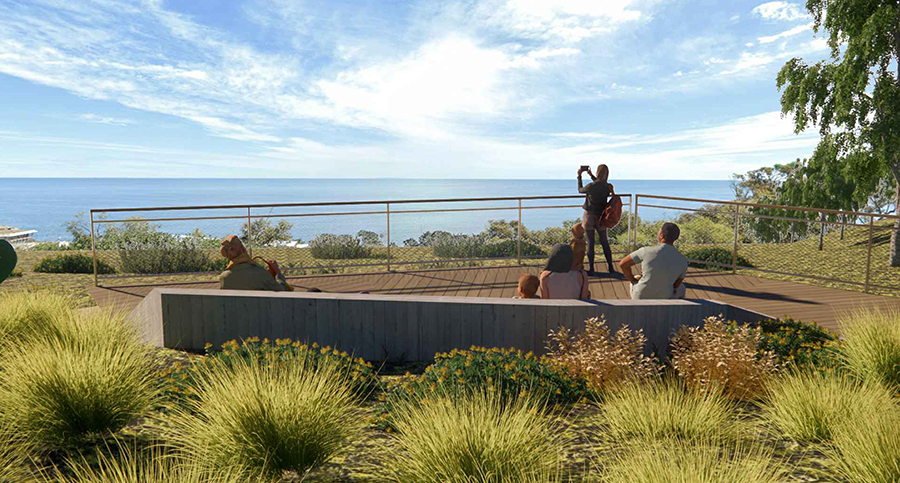
Project rendering
UC San Diego is constructing a publicly accessible coastal overlook consisting of a raised viewing platform with integrated seating and eating area, affording sweeping ocean views from a location roughly 400 feet above the coastline. The project aims to enhance coastal access with an emphasis on providing safe access to coastal views along La Jolla Shores Drive at the Scripps Institution of Oceanography campus.
The approximately 550 square-foot viewing platform will be installed at the top of a west-facing slope adjacent to La Jolla Shores Drive just west of Coast Apartments. The project will include two ADA compliant parking stalls and decomposed granite pathways that will lead from the parking area and La Jolla Shores Drive to the overlook platform. An emergency phone blue light tower will be installed at the project site to address public safety. In order to enhance view corridors to the ocean, existing non-native vegetation will be removed downslope of the platform, and native plantings will be installed to restore the site and maintain slope stability.
Pepper Canyon East District proposes to develop on a 20-acre site on the west campus adjacent to the Light Rail Transit station. The District would be built in multiple phases and would include new student beds to expand access to the benefits of below market on-campus housing. Pepper Canyon East District will remove the existing housing and build approximately 6,000 beds, a hotel, food and beverage, recreation, and amenity spaces.
The first project, Master Plan and District Phase 1, is now going forward with pre-design to complete the District visioning. Once master planned, District Phase 1 would deliver up to 2,000 beds (1,000 net new) with associated amenities in fall 2030.
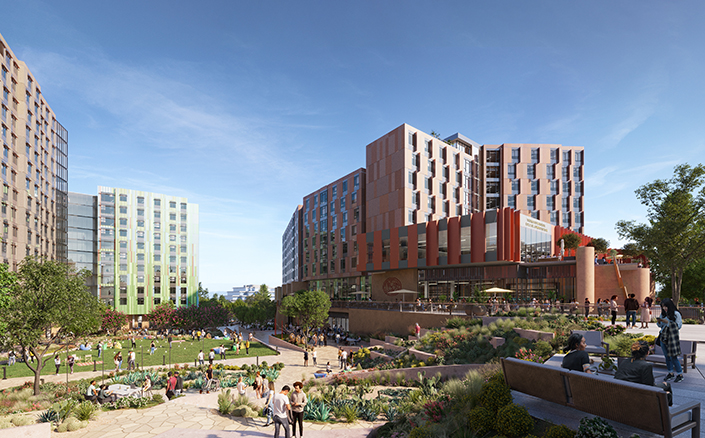
Project rendering
The proposed Ridge Walk North Living and Learning Neighborhood project would provide approximately 2,400 new student beds on the San Diego campus. The program would include space for student dining and fitness, replacement space for programs currently in structures to be demolished for the project, and permanent space for the Marshall College academic program and student support services. It also includes significant public realm improvements as well as community building space for students that incorporates programs, such as ESports, a glass lab, and Basic Needs.This project supports diversity, equity, and inclusion by expanding access to the “living/learning community” model to a greater proportion of students. Living on campus gives students access to a rich variety of academic and social resources and supports student success. Students who have the benefit of living on campus are immersed in the University community with easy access (via campus shuttle, bicycle, or on foot) to adjacent academic, research, clinical, recreation, and retail facilities, supporting the campus’s Climate Action Plan. The campus will make every effort to design the project to meet or exceed all University of California sustainability and carbon neutrality goals within the constraints of the overall project financial feasibility.
If you have questions about the project, email 5511rwnlln@ucsd.edu.
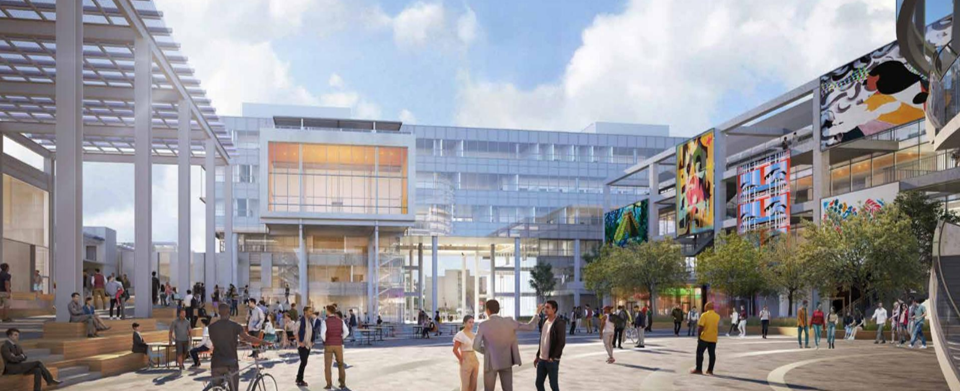
Project rendering
The Triton Center project would demolish a collection of 1940s-era, one-story buildings located in University Center, to provide expanded and centralized space for specialized instructional support, student health, mental health and well-being services, and other student academic services and resources to meet the needs of a rapidly growing and diverse student population. Triton Center would also include an alumni and welcome center, multi-purpose space for various campus programs, public realm improvements and parking structure. A new vibrant urban core for central campus, Triton Center will create a socially-dynamic and welcoming destination that will showcase the unique accomplishments, heritage, art and culture of UC San Diego, and implement a key component of the campus’ 2018 Long Range Development Plan.
Complete our Customer Feedback Form.